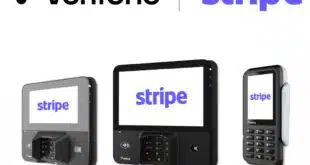More than 90% of Americans still prefer to receive paper bills, but a strong majority of them pay electronically, according to findings released Monday from a survey sponsored by the U.S. Postal Service’s Office of the Inspector General.
The three-month study of customer records from a major East Coast utility found that 91% of customers elected to receive their bills by mail. Even among younger, supposedly digitally-savvy customers, an average of 89% of customers chose paper bills.
The unidentified biller dubbed “Utility East” provided InfoTrends Inc., a consulting firm working with the Inspector General, with 2 million residential customer billing records for last May, June and July. Weymouth, Mass.-based InfoTrends then randomly picked several subsets of 5,000 customers to examine how they received and paid their bills. The firm also interviewed executives who manage billing and payments.
Why the preference for paper? “Research shows that consumers value the physical mail piece as a record-keeping tool and reminder to pay,” the report says. “Moreover, consumers do not save any money by receiving their bills digitally, whereas they save postage when they pay online. The executives we interviewed said this was consistent with what they have observed in the industry.”
While they still like to receive paper bills, Americans increasingly are turning to electronic channels to pay them. Citing its most recent massive annual study of mail trends, the Postal Service says Americans received 24 billion household bills and statements in fiscal 2013, with the Postal Service delivering nearly 80% of them. But consumers paid only 37% of those bills by mail that year—a 45% decline from 1998.
The new study says nearly 78% of Utility East customers use electronic bill payment, with new customers on their third billing cycles adopting electronic payment at even higher rates.
The study also examined Utility East’s average costs for sending and receiving bills. Electronic delivery and payment is the cheapest, not surprisingly—just 6 cents. Mail with electronic payment costs 49 cents for delivery and a penny for processing for a total of 50 cents, while mail delivery and payment costs an average of 53 cents.
But InfoTrends also factored in call-center costs—a substantial expense for most billers. Adding that, the total cost of all-electronic delivery and payment rises to 32 cents on average. Delivery and payment by mail goes to 76 cents while mail delivery with electronic payment costs slightly more, 80 cents.
Bill delivery and payments remain an important revenue-generator for the loss-wracked U.S. Postal Service. What the Postal Service calls transactional mail pieces, primarily household bills and payments, brought in $18.5 billion for the agency in fiscal 2013, more than a quarter of its total revenues. The Postal Service hopes paper will continue to play a major role in bill payments, at least for a while.
“Customer satisfaction rates are a primary driver for companies that send transactional mail,” the report says. “While over time more customers may opt to receive bills electronically, our research shows that physical mail still plays an important role today and will continue to do so in the near future.”





